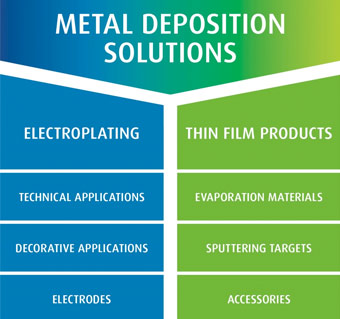
More info
tags: Cheap Palladium Plating – Companies Cheap Palladium Plating – High Power Connector Plating – Longevity High Current Plugs – Overview Cheap Palladium Plating –
Would you like more info about overview ruthenium plating then take a look at https://mds.umicore.com/en/ | Overview Ruthenium Plating
Title: The Sustainable Future of Electroplating with Ruthenium
Introduction:
Electroplating is a commonly used method in the manufacturing industry for coating metal objects with a thin layer of another metal. This process is crucial in improving the appearance, durability, and functionality of various products. Over the years, different metals have been used for electroplating, with palladium being a popular choice. However, with the rising demand for sustainable practices, the use of ruthenium as a substitute for palladium has gained attention. In this article, we will explore the overview of ruthenium plating and its significant advantages over other metals.
Table of Contents:
- Introduction
- What is Ruthenium?
- Ruthenium vs. Palladium: The Price Advantage
- Benefits of Ruthenium Plating
- Sustainability
- Durability
- Corrosion Resistance
- Electrical Conductivity
- Applications of Ruthenium Plating
- Conclusion
What is Ruthenium?
Ruthenium is a rare transition metal that belongs to the platinum group, along with palladium, rhodium, and platinum. It is a hard, silvery-white metal with high chemical stability, making it an ideal choice for electroplating. Its unique properties make it suitable for various industrial applications, including electronics, medical devices, jewelry, and automotive parts.
Ruthenium vs. Palladium: The Price Advantage
One of the significant advantages of using ruthenium over palladium for electroplating is its price. While palladium is a costly metal, ruthenium is relatively more affordable, making it an attractive option for manufacturers. With the increasing demand for palladium in the automotive industry, its price has skyrocketed, leading to financial constraints for many businesses. Thus, choosing ruthenium can help save costs without compromising on the quality of the plating.
Benefits of Ruthenium Plating
Apart from its economic advantage, ruthenium plating offers several other benefits that make it a sustainable substitute for palladium.
-
Sustainability:
In recent years, the focus on sustainable practices has increased, and the use of ruthenium aligns with this trend. It is a conflict-free metal, meaning it is not sourced from regions affected by political turmoil. In contrast, palladium mining is heavily concentrated in a few countries, leading to potential ethical concerns. -
Durability:
Ruthenium plating is known for its durability, making it an excellent choice for products that require long-term use. Its robust structure and high resistance to wear and tear ensure that the plated items maintain their appearance and function for an extended period. -
Corrosion Resistance:
Corrosion is a common problem in metal objects, especially those exposed to harsh environments or chemicals. Ruthenium plating offers excellent corrosion resistance, protecting the underlying metal from damage. This makes it ideal for industrial applications where the plated parts are exposed to corrosive substances. -
Electrical Conductivity:
Another significant advantage of ruthenium plating is its high electrical conductivity. This property makes it suitable for electronics and electrical components, ensuring optimal performance.
Applications of Ruthenium Plating:
Ruthenium plating has a wide range of industrial applications due to its unique properties. It is commonly used in the production of medical devices, such as pacemakers, where durability and biocompatibility are critical. It is also utilized in electronics, jewelry, and automotive parts, among others.
Conclusion:
Ruthenium plating offers a sustainable solution for electroplating, with significant advantages over other metals like palladium. Its low cost, durability, corrosion resistance, and electrical conductivity make it a valuable option for various industrial applications. With the increasing demand for sustainable practices, the future looks promising for ruthenium as a substitute for palladium in electroplating. To learn more about the sustainable use of ruthenium, check out Umicore´s article on “Ruthenium as a Sustainable Substitute for Palladium Plating with Significant Price Advantages”.
Overview ruthenium plating
!–StopPubText–>.
